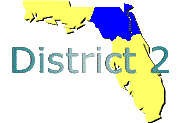

|
District 2: |
|
Send Your |

Clay County Traffic Control Equipment Equipment Packages |
 |
The following National ITS Architecture equipment packages are associated with the "Clay County Traffic Control Equipment" element. Select the "Details" icon to see the detailed process specifications that support each equipment package, or consult the National ITS Architecture web site for more information.
This Equipment package shall provide the capability to receive vehicle signal priority requests and control roadside signals accordingly.
This Equipment package provides the capabilities to monitor traffic flow in major intersections and on main highways for urban areas and to monitor road conditions using fixed equipment such as loop detectors and wireline communication.
This Equipment package provides incident detection capability to reside at the roadside. For example, advanced CCTV's with built-in incident detection algorithms would allow the actual detection function to be roadside rather than transmitting images to a center for visual or automated detection.
This Equipment package provides the capabilities to control traffic signals at major intersections and on main highways for urban areas. This Equipment package is generally constrained to a single jurisdiction.
Roadway Traffic Information Dissemination
![]()
This Equipment package provides the roadside elements of traffic information dissemination including DMS and HAR.
This Equipment Package manages highway traffic at highway-rail intersections (HRIs) where operational requirements do not dictate advanced features (e.g., where rail operational speeds are less than 80 miles per hour). Either passive (e.g., the crossbuck sign) or active warning systems (e.g., flashing lights and gates) are supported depending on the specific requirements for each intersection. These traditional HRI warning systems may also be augmented with other standard traffic management devices. The warning systems are activated on notification by interfaced wayside equipment of an approaching train. The equipment at the HRI may also be interconnected with adjacent signalized intersections so that local control can be adapted to highway-rail intersection activities. Health monitoring of the HRI equipment and interfaces is performed; detected abnormalities are reported through interfaces to the wayside interface equipment and the traffic management subsystem.
